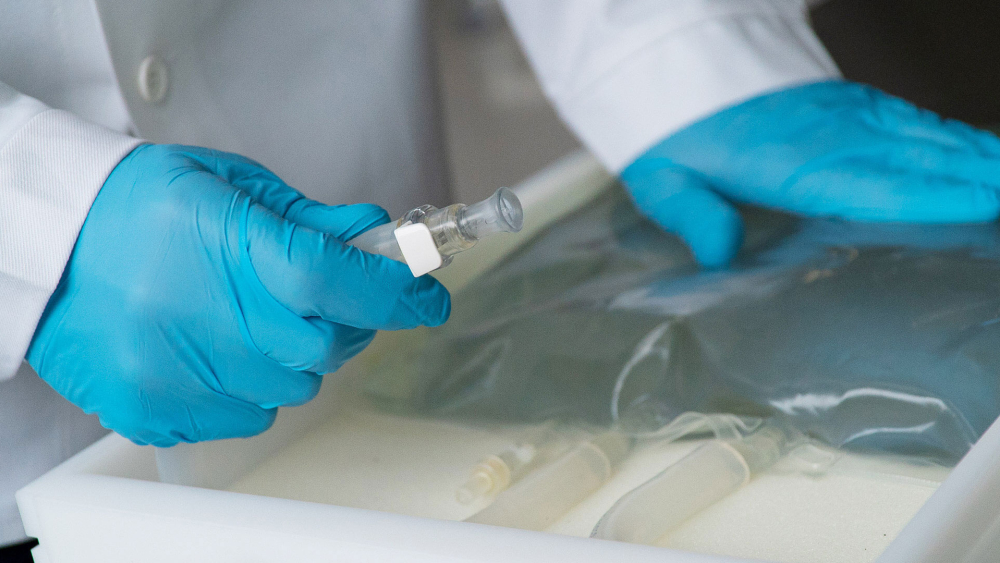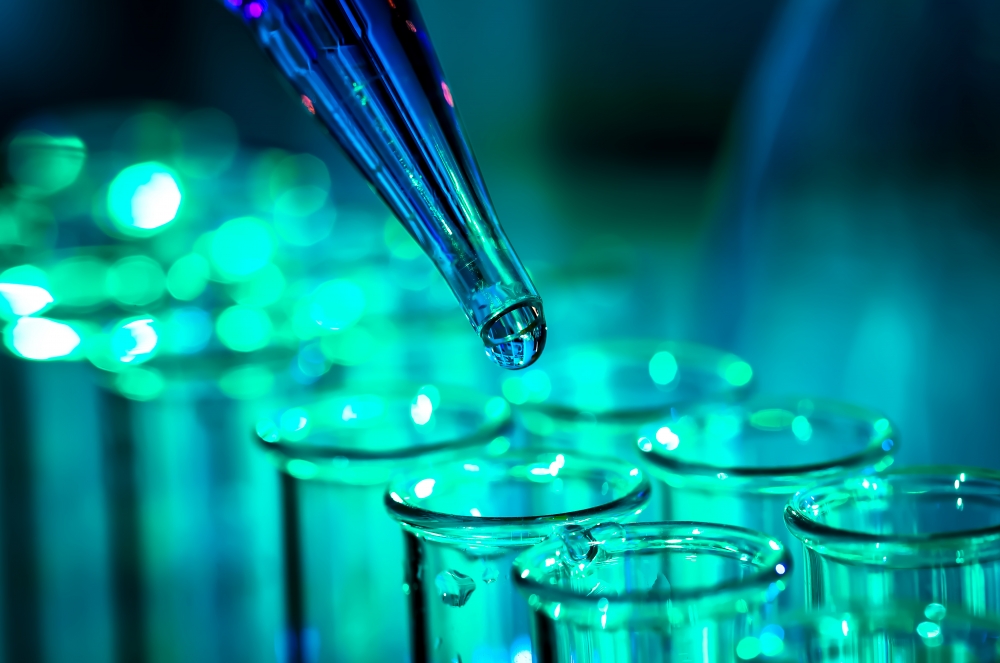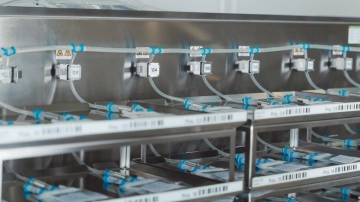Drug substance vs. drug product – these are the differences
Table of contents
ShowDrug substance vs. drug product: the difference might not be clear for people that are not trained in the fields of life sciences, chemistry or pharmaceutical sciences. While the term “drug substance” is limited to the active pharmaceutical ingredient, which is often only a part of a final drug product, “drug product” refers to the finished dosage form.
The difference may seem intricate at first but it is very important for numerous ideas and notions pertaining to the pharmaceutical industry: drug development, manufacture and management of bulk drug substance, formulation of drug products like tablets or extended release capsules, and interactions with regulatory authorities.
With this text, we want to highlight the differences between the two terms “drug substance” and “drug product” and conclude with definitions for related terms that originate from pharma jargon.
Drug substance
A drug substance, also known as an active pharmaceutical ingredient (API), is the specific chemical compound or molecule within a drug product that provides the intended therapeutic effect. It is the active ingredient responsible for the drug's pharmacological activity. Drug substances are typically produced through a series of chemical or biotechnological processes and must meet rigorous quality and purity standards.
One term that is always encountered is “loss of drug substance”. “Drug substance” designates the type(s) of molecules that are pharmaceutically active, i. e. are responsible for the desired effects of the drug, hence the synonymous term “active pharmaceutical ingredient” (API). Let’s take a closer look.
Definition of drug substance
Drug substances are defined differently by regulatory bodies:
U.S. Food And Drug Administration (FDA): “Active pharmaceutical ingredient means any substance that is intended for incorporation into a finished drug product and is intended to furnish pharmacological activity or other direct effect in the diagnosis, cure, mitigation, treatment, or prevention of disease, or to affect the structure or any function of the body. Active pharmaceutical ingredient does not include intermediates used in the synthesis of the substance.”1
Committee on mutual recognition agreements and reliance in the regulation of medicines:
“Any substance or mixture of substances intended to be used in the manufacture of a drug (medicinal) product and that, when used in the production of a drug, becomes an active ingredient of the drug product. Such substances are intended to furnish pharmacological activity or other direct effect in the diagnosis, cure, mitigation, treatment, or prevention of disease or to affect the structure and function of the body.”2
The European Medicines Agency (EMA) uses the same definition and specifically defines active substances and APIs as synonymous.3
For most purposes, drug substances can be considered to be the substance that acts on the body to effect pharmaceutical actions. Drug products contain such active drug substance(s) and additional ingredients to ensure advantageous properties of the whole product, i. e. bioavailability, proper shelf life and stability or slow-release formulations.1 2 3

Drug substance characteristics and production
Due to the pharmaceutical activity characteristics, the production of drug substances is fundamentally different from other industrial products. APIs are generally intended for use in humans and thus require highest demands on quality, purity, absence of residual synthesis reagents and prevention of errors in their production, labeling and further processing. Even seemingly simple operations like freezing drug substances could lead to formation of impurities and significant reduction in their quality attributes and the same is true for thawing drug substances.
Thus, stringent in-process analytical procedures conforming to the US pharmacopeia (USP) monographs must be established to gain FDA approval of new drug applications. Additionally, the ICH provides guidance for industry standards and acceptance criteria.
Naturally, depending on the potency of the APIs, they must be considered potent toxins and exposure of workers must be prevented.
Hence, handling of APIs must undergo stringent validation and the use of dedicated closed platform systems for liquid management is highly recommended.
Types and examples of drug substances
Drug substances can be categorized into drug classes according to their pharmaceutical effects and uses:
- analgesics
- antibiotics
- anticancer
- antidiabetic
- cardiovascular
Specific examples for drug substances of these drug classes are:
- bioconjugates
- mRNA
- cell and gene therapies
- vaccines
Drug product
A drug product is the final form of a drug that is ready for distribution and consumption by patients. A drug product typically includes not only the active pharmaceutical ingredient (API) that provides the therapeutic effect but also other components, such as excipients, fillers, binders, and coatings, that help deliver the medication in a safe and effective manner. Drug products come in various forms, including tablets, capsules, liquid suspensions, injectables, creams, and more.
Definition of drug product
First, we want to cite definitions of “drug product” and the synonymous “Finished dosage form” from regulatory agencies:
US FDA: “The finished dosage form that contains a drug substance, generally, but not necessarily in association with other active or inactive ingredients.”4
EMA: “The form of the completed pharmaceutical product, e.g. tablet, capsule, injection, elixir, suppository.”5
From these definitions we can conclude that a drug product is a product that contains an API and might contain inactive substances to enhance the properties of the overall drug product, i. e. excipients, solubilizers, stabilizers, pharmaceutically acceptable solvents (e. g. carrier oils or water for injections).4 5
Drug products characteristics and production
The general characterization of manufacturing processes of drug products is difficult due to the many forms they come in: capsules, tablets, injectable solutions, inhalers, etc.
For modern high-tech drug products like antibody drug conjugates (ADCs) or cell and gene therapies (CGTs), the manufacture of the drug might include taking the bulk API out of frozen storage by thawing with a plate freezing/thawing system. Subsequently, it is mixed with suitable buffer and salt solutions. After filling into single use bioprocess 2D bags, the solution is brought to ultra-cold conditions by the means of plate freezers. Finally, the finished product can be prepared for shipping to healthcare centers.
Types and examples of drug products
There are several ways to categorize drug products, e.g. according to their physical form. Another way is the concept of enhancement that is achieved in the finished dosage form or in the production thereof:
- Solubilization & Bioavailability Enhancement Techniques
- Sterile Products
- Highly Potent APIs and/or Controlled Substances <6
Raw materials, starting materials … Where’s the difference?
The terms “raw materials” and “starting materials” are at first sight similarly ambigue as drug substance and drug product. We want to clarify their meaning in the next section.
Raw materials are defined as materials that are necessary in the production of the API and come in direct contact with synthesis intermediates or cell and tissue cultures. They are not intended to remain present in the finished API. Examples are reagents, culture media, buffer salts etc.
On the other hand, starting materials are structural fragments that remain present in the API, e.g. for small molecule drugs: molecular building blocks that are elaborated and modified to generate the API molecules; or for biopharmaceuticals: plasmids for transfection.

Drug substance vs. drug product – related terms
- Active pharmaceutical ingredient: synonymous to drug substance
- antibody drug conjugate (ADC): a covalent combination of a highly potent small molecule with a monoclonal antibody
- biopharmaceutical: a pharmaceutical that is substantially similar to or derived from biological components
- cell and gene therapy: therapeutics that are based on cells or involve the transfer of genetic material
Drug product vs. drug substance – the difference
As an analogy consider table salt: the salt grains are the actual desired ingredient – they are the component of table salt that we buy the product for (corresponding to the API). Additionally, table salt contains anti-caking agents that prevent the salt grains from clumping in moist climates. They enhance the overall properties of the product.
To condense the key points into a brief summary: drug substances are the pharmaceutically active components of drug products, while drug products might contain additional inactive ingredients that enhance the general performance of the drug substance in the drug product.
- CFR - Code of Federal Regulations Title 21, https://www.accessdata.fda.gov/scripts/cdrh/cfdocs/cfcfr/CFRSearch.cfm?fr=207.1, Published 2023
- Regulating Medicines in a Globalized World: The Need for Increased Reliance Among Regulators., https://www.ncbi.nlm.nih.gov/books/NBK555753/, Published 2019
- EudraGMDP Glossary, http://eudragmdp.ema.europa.eu/help_public/content/v3_0_user_manual/glossary.htm, Published
- Drugs@FDA Glossary of Terms, https://www.fda.gov/drugs/drug-approvals-and-databases/drugsfda-glossary-terms, Published
- EudraGMDP Glossary, http://eudragmdp.ema.europa.eu/help_public/content/v3_0_user_manual/glossary.htm, Published
- What are Complex Drug Products and Why Should You Care?, https://lubrizolcdmo.com/blog/what-are-complex-drug-products-and-why-should-you-care/#the-four-categories-of-complex-drug-products, Published 2018








